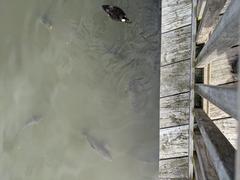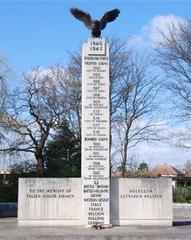Chiltern Open Air Museum: Visitor Information, Tickets, and Historical Significance
Date: 24/07/2024
Introduction
The Chiltern Open Air Museum (COAM), located in the picturesque Chiltern Hills in Buckinghamshire, is a time capsule that offers visitors a journey through the rich rural heritage of the region. Established in 1976 and opened to the public in 1981, the museum’s primary mission is to rescue and preserve historic buildings from the Chilterns that were at risk of being lost to demolition. These buildings, meticulously dismantled, transported, and reassembled on the museum’s expansive 45-acre site, provide an immersive experience into the architectural and cultural history of the area (Chiltern Open Air Museum).
Visitors to COAM can explore over 35 historic buildings, each representing different eras and aspects of rural life. Notable structures include a 1940s prefab from Amersham, a Victorian toll house from High Wycombe, and an Iron Age roundhouse, among others. The museum not only preserves these buildings but also brings them to life through various interactive exhibits, traditional skills workshops, and historical reenactments. Whether you are a history enthusiast, a family looking for an educational outing, or an educator seeking a unique learning environment, COAM offers something for everyone.
Additionally, the museum hosts a variety of special events and annual festivals, featuring historical reenactments, craft demonstrations, and themed activities that provide a deeper understanding of the past. Accessibility, family-friendly facilities, and a dog-friendly policy make it a welcoming destination for all. As you plan your visit, this comprehensive guide will provide you with all the necessary information, including visiting hours, ticket prices, travel tips, and nearby attractions, ensuring a memorable and enriching experience at the Chiltern Open Air Museum.
Table of Contents
- Introduction
- History and Significance
- Visitor Information
- Exhibits and Activities
- Nearby Attractions
- FAQ
- Conclusion
History and Significance
Founding and Early Years
The Chiltern Open Air Museum (COAM) was founded in 1976 and opened to the public in 1981. The museum was established to rescue and restore common English buildings from the Chilterns that were at risk of demolition. These buildings were meticulously dismantled, transported, and reconstructed on the museum’s 45-acre site, preserving a significant part of the region’s architectural heritage that might otherwise have been lost.
Architectural Collection
The museum’s collection comprises over 35 historic buildings, each representing various aspects of rural life in the Chilterns. Notable structures include a 1940s prefab from Amersham, a Victorian toll house from High Wycombe, and a traditional working farm.
Visitor Information
Visiting Hours
The museum is open from March to November, with daily hours from 10:00 AM to 5:00 PM. Special events may extend these hours, so be sure to check the official website for the most current information.
Ticket Prices
- Adults - £10.50
- Children (4-16 years) - £6.50
- Seniors (65+) - £9.50
- Family Ticket (2 adults + 2 children) - £32.00
Special rates are available for groups, and annual passes can also be purchased for unlimited visits throughout the year. Discounts may apply during special events or off-peak times.
Travel Tips
The Chiltern Open Air Museum is located at Newland Park, Gorelands Lane, Chalfont St. Giles, Buckinghamshire, HP8 4AB. Ample parking is available on-site for visitors. For those using public transport, the nearest train stations are Chalfont & Latimer and Gerrards Cross, from which you can take a taxi or a local bus.
Exhibits and Activities
Special Events
COAM hosts a variety of special events throughout the year, including historical reenactments, craft workshops, and seasonal celebrations. Check the events calendar on the museum’s website for upcoming activities.
Hands-On Activities and Traditional Skills
The museum offers numerous hands-on activities and traditional skills workshops, allowing visitors to engage directly with historical practices.
- Blacksmithing - Visitors can try their hand at blacksmithing, learning how to forge metal using traditional techniques.
- Willow Sculpting and Weaving - These workshops teach the art of creating sculptures and functional items from willow, a skill with deep roots in rural crafts.
- Straw Plaiting - This activity demonstrates the intricate process of plaiting straw, a craft historically significant in hat-making and other decorative arts.
- Historic Cooking - Participants can experience cooking using historical methods and recipes, providing a taste of the past.
- Folk Singing - Engaging in traditional folk songs, visitors can connect with the musical heritage of the region.
Guided Tours
Guided tours are available and highly recommended to gain deeper insights into the history and significance of the buildings and artifacts. Tours can be booked in advance through the museum’s website.
Photographic Spots
The museum offers numerous picturesque spots perfect for photography enthusiasts. The traditional farm, Victorian gardens, and historic buildings provide stunning backdrops for memorable photos.
Nearby Attractions
While visiting the Chiltern Open Air Museum, consider exploring nearby attractions such as the Chiltern Hills Area of Outstanding Natural Beauty, Hughenden Manor, and the Roald Dahl Museum and Story Centre.
FAQ
Q: Are pets allowed in the museum? A: Yes, well-behaved dogs on a leash are welcome in the outdoor areas of the museum.
Q: Is the museum accessible for people with disabilities? A: COAM strives to be accessible to all visitors. Wheelchair access is available to most buildings, and accessible restrooms are provided.
Q: Can I bring my own food and drinks? A: Yes, there are designated picnic areas where visitors can enjoy their own meals.
Conclusion
A visit to the Chiltern Open Air Museum is not just an outing but a journey through time, offering a unique opportunity to immerse oneself in the rich rural heritage of the Chilterns. The museum’s dedication to preserving and showcasing historic buildings provides invaluable insights into the architectural and cultural history of the region. With over 35 meticulously reconstructed structures, interactive exhibits, and engaging events, COAM offers a multifaceted experience that caters to diverse interests, making it an ideal destination for history enthusiasts, families, and educators alike.
The museum’s extensive event calendar, including heritage crafts weekends, Viking raids, and Roman gladiator reenactments, ensures that there is always something new and exciting to experience. Furthermore, the museum’s commitment to accessibility and inclusivity, along with its family-friendly and dog-friendly policies, makes it a welcoming destination for all visitors. Nearby attractions such as the Chiltern Hills Area of Outstanding Natural Beauty and the Roald Dahl Museum further enhance the appeal of a visit to this remarkable site.
As you plan your visit, be sure to check the museum’s website for the latest updates on visiting hours, ticket prices, and upcoming events. By doing so, you can make the most of your time at the Chiltern Open Air Museum and enjoy a truly enriching and memorable experience (COAM Official Website).
References
- Chiltern Open Air Museum. (n.d.). In Wikipedia. Retrieved from https://en.wikipedia.org/wiki/Chiltern_Open_Air_Museum
- Chiltern Open Air Museum Official Website. (n.d.). Retrieved from https://coam.org.uk/
- Historic Houses. (n.d.). Chiltern Open Air Museum. Retrieved from https://www.historichouses.org/house/chiltern-open-air-museum/visit/
- Visit South East England. (n.d.). Chiltern Open Air Museum. Retrieved from https://www.visitsoutheastengland.com/things-to-do/chiltern-open-air-museum-p1639511





